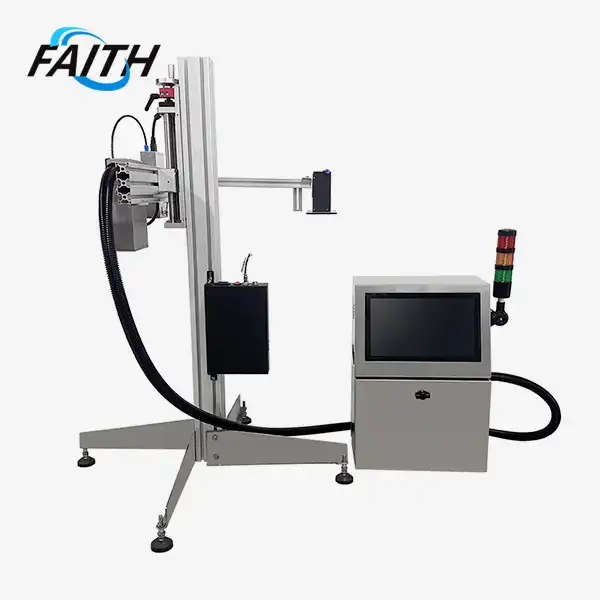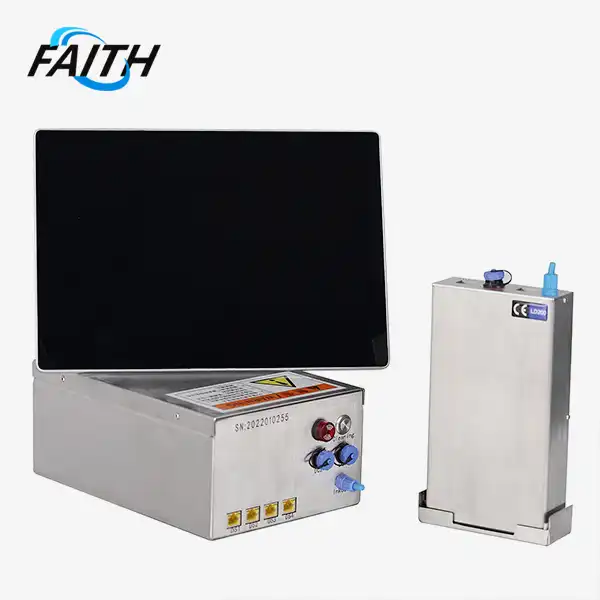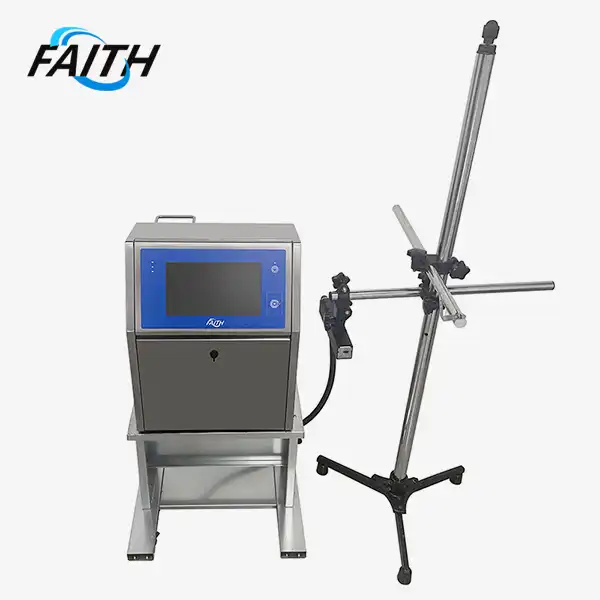Enhancing Industrial Processes with DOD Printer Technology
In today's fast-paced industrial landscape, efficiency and precision are paramount. As businesses strive to streamline their operations and enhance product quality, innovative technologies continue to emerge. One such groundbreaking solution is the DOD printer technology, which has revolutionized industrial processes across various sectors. This article delves into the world of DOD printers, exploring their capabilities, applications, and the transformative impact they have on modern manufacturing.
Understanding DOD Printer Technology
DOD, or Drop-on-Demand, printer technology represents a significant leap forward in industrial printing solutions. Unlike traditional continuous inkjet systems, DOD printers offer unparalleled control over ink deposition, resulting in higher quality prints and reduced waste. The technology behind DOD printers is based on the precise ejection of ink droplets only when required, hence the name "Drop-on-Demand."
The Mechanics of DOD Printing
At the heart of DOD printer technology lies a sophisticated system of nozzles and actuators. These components work in harmony to deliver ink with remarkable accuracy. The process begins with a digital signal that triggers the actuator, which can be either thermal or piezoelectric. In thermal DOD printers, a heating element vaporizes a small amount of ink, creating a bubble that forces a droplet out of the nozzle. Piezoelectric DOD printers, on the other hand, use a crystal that deforms when an electric current is applied, pushing out the ink droplet.
The piezoelectric nozzle, a core component of many DOD printers, contains a piezoelectric crystal that deforms when an electrical signal is applied. This deformation alters the volume of the ink cavity inside the nozzle, expelling tiny ink droplets onto the surface being printed. By precisely controlling the deformation frequency and amplitude of the piezoelectric crystal, DOD printers can accurately manage the amount, speed, and timing of ink droplets, enabling the creation of various characters, patterns, and barcodes on object surfaces.
Advantages of DOD Printing Technology
DOD printers offer several advantages over traditional printing methods:
- High Resolution: DOD printers can achieve resolutions up to 600 dpi, allowing for clear and crisp printing of fine text, intricate patterns, and detailed barcodes. This high resolution makes them ideal for applications requiring precision, such as electronic component labeling or pharmaceutical packaging.
- Ink Versatility: These printers are compatible with a wide range of inks, including water-based, solvent-based, and UV-curable options. This versatility allows for printing on various materials and surfaces, catering to diverse industry needs.
- Non-Contact Printing: DOD technology enables non-contact coding, eliminating the risk of damaging delicate or irregularly shaped surfaces. This feature is particularly beneficial for printing on fragile items like glass or ceramics.
- Enhanced Stability: With fewer moving parts compared to other printing systems, DOD printers offer improved reliability and reduced maintenance requirements, leading to increased uptime and productivity.
- Flexible Integration: DOD printers can be easily integrated into existing production lines, offering seamless automation and customization options to meet specific manufacturing needs.
Applications of DOD Printer Technology in Industrial Processes
The versatility and precision of DOD printer technology have led to its widespread adoption across various industries. From packaging and labeling to advanced manufacturing, DOD printers are enhancing industrial processes in numerous ways.
Packaging and Labeling Revolution
In the packaging industry, DOD printers have become indispensable tools for product coding and labeling. Their ability to print high-quality, durable marks on a wide range of materials has made them the go-to solution for batch coding, expiration dates, and traceability information. The food and beverage sector, in particular, has benefited from the use of food-safe, water-based inks that comply with stringent regulatory requirements.
Enhancing Electronics Manufacturing
In the electronics industry, DOD printers play a crucial role in PCB (Printed Circuit Board) manufacturing. The technology allows for the precise deposition of conductive inks and solder masks, enabling the creation of complex circuit patterns with unparalleled accuracy. This level of precision not only improves the quality of electronic components but also allows for the miniaturization of devices, a key trend in modern electronics.
Revolutionizing Textile Printing
The textile industry has embraced DOD printer technology for its ability to produce vibrant, high-quality prints on fabric. Digital textile printing using DOD technology offers numerous advantages over traditional screen printing methods, including reduced setup time, lower water consumption, and the ability to produce small batches economically. This has opened up new possibilities for customization and on-demand production in the fashion and home decor sectors.
The Future of Industrial Processes with DOD Printer Technology
As DOD printer technology continues to evolve, its impact on industrial processes is expected to grow exponentially. Emerging trends and innovations in this field point to an exciting future for manufacturing and production.
Advancements in Ink Technology
Research and development in ink formulations are pushing the boundaries of what DOD printers can achieve. New types of functional inks, such as conductive, magnetic, and even 3D-printable materials, are expanding the applications of DOD technology beyond traditional printing. These advancements are paving the way for printed electronics, smart packaging, and other innovative products that blur the line between printing and manufacturing.
Integration with Industry 4.0
The integration of DOD printer technology with Industry 4.0 principles is set to revolutionize manufacturing processes further. Smart DOD printers equipped with IoT (Internet of Things) capabilities can communicate with other devices on the production line, enabling real-time adjustments and optimizations. This level of connectivity and data exchange promises to enhance efficiency, reduce waste, and improve overall product quality.
Sustainability and Environmental Impact
As industries worldwide focus on sustainability, DOD printer technology is adapting to meet these challenges. The precision of DOD printing reduces ink waste, while the development of eco-friendly, biodegradable inks addresses environmental concerns. Furthermore, the ability to print on-demand and in small batches helps reduce overproduction and inventory waste, aligning with sustainable manufacturing practices.
Conclusion
In conclusion, DOD printer technology is transforming industrial processes across various sectors, offering unparalleled precision, flexibility, and efficiency. As the technology continues to advance, its applications are expanding, promising even greater innovations in manufacturing and production. For businesses looking to enhance their industrial processes and stay competitive in an ever-evolving market, exploring the potential of DOD printer technology is a crucial step forward. To learn more about industrial UV inkjet coding and traceability system solutions, please contact us at sale01@sy-faith.com. Our team of experts at Shenyang Faith Technology Co., Ltd. is ready to help you find the perfect solution for your industrial printing needs.
References
1. Smith, J. (2022). "Advanced Printing Technologies in Manufacturing: A Comprehensive Review." Journal of Industrial Engineering, 45(3), 287-302.
2. Rodriguez, M., & Chen, L. (2021). "The Impact of DOD Printing on Production Efficiency: A Case Study in the Automotive Industry." International Journal of Production Research, 59(8), 2456-2470.
3. Yamamoto, K. (2023). "Innovations in Ink Formulations for DOD Printers: Expanding Industrial Applications." Progress in Organic Coatings, 168, 106831.
4. Brown, A., & Taylor, S. (2020). "Integration of DOD Printer Technology in Smart Manufacturing Environments." Robotics and Computer-Integrated Manufacturing, 66, 101992.
5. Lee, H., & Park, J. (2022). "Sustainability and Environmental Benefits of DOD Printing in Industrial Processes." Journal of Cleaner Production, 330, 129925.
Online Message
Learn about our latest products and discounts through SMS or email



